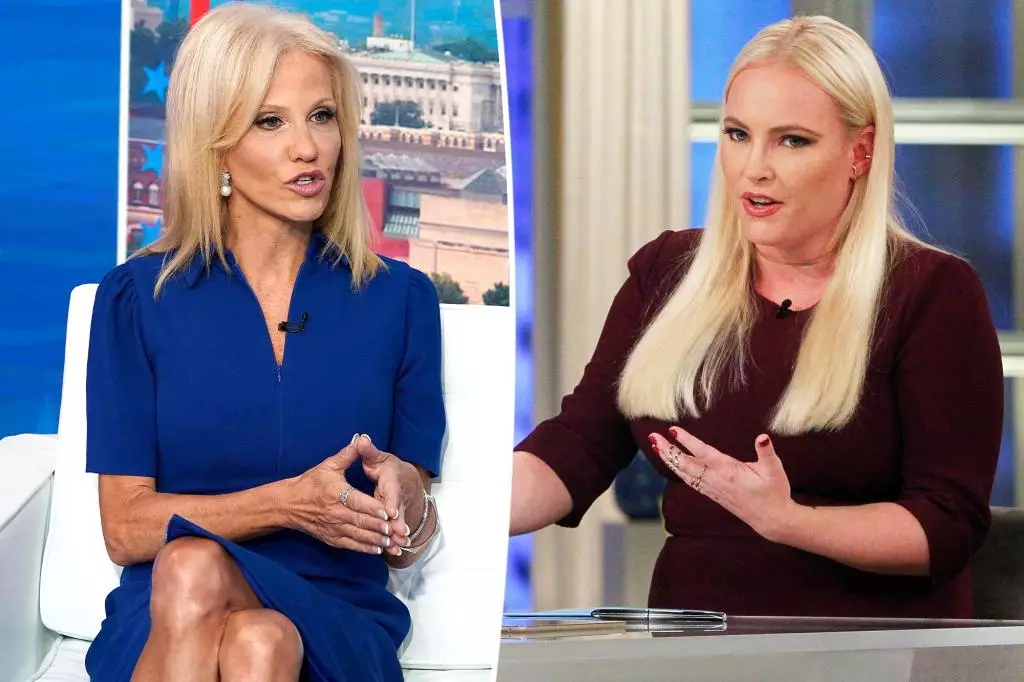In the realm of political discourse and public engagements, altercations can arise that highlight the personal tensions buried beneath the surface of public personas. A recent encounter between Kellyanne Conway, former Senior Counselor to President Trump, and Meghan McCain, the outspoken former co-host of “The View,” recently made headlines. The incident occurred backstage at a panel hosted by The Washington Post during a Women’s Summit organized by the prominent journalist Tina Brown. While the specifics of what transpired in the green room remain murky, eyewitness accounts present two contrasting narratives—one painting Conway as the aggressor and the other portraying her as a calm interlocutor.
This discord emphasizes the volatility of personal relationships, particularly when they intersect with the high-octane world of politics and media. The incident hasn’t just caught the attention of those in the political realm; it has ignited discussions about how public figures handle personal grievances in high-stakes environments.
According to various reports, tensions boiled over after Conway approached McCain following their joint appearance onstage. Conway reportedly confronted McCain about disparaging comments the latter made regarding Conway’s marriage to George Conway, co-founder of the Lincoln Project. The pivotal issue at hand was McCain’s choice of words during her appearances on “The View” and “Watch What Happens Live,” where she referred to Conway’s marriage as “gross.”
While some witnesses allege that Conway expressed her feelings forcefully, saying “You’re disgusting! You hurt people!” others insist that her approach was measured and that the confrontation was a private matter intended to avoid escalating a public spectacle. This divergence in accounts raises questions about the influence of perspective and bias; after all, those privy to the incident likely held pre-existing views about both women.
As the confrontation unfolded, the emotional stakes became evident. While Conway sought to offer a passionate retort to perceived slights against her marriage, McCain, in turn, attempted to navigate this charged interaction by expressing discomfort and seeking to pacify the situation. Eyewitnesses recounted McCain repeating, “You’re in my space. I’m uncomfortable,” in an effort to establish boundaries while simultaneously trying to remain composed. This moment of vulnerability underscores the human aspect behind their public personas: despite their influence and status, both women are not immune to emotional reactions.
Conflict resolution—or the lack thereof—was notably absent in this encounter. McCain’s eventual response, inquiring, “What can I do to make you feel better?” reflects a moment of desperation in the face of Conway’s fire. The subsequent exchange, wherein McCain brought up her own trauma related to Donald Trump’s comments about her father—Senator John McCain—induces a sense of empathy, but ultimately moves the dialogue into a more personal arena.
In the wake of the confrontation, the clash between Conway and McCain sparked widespread commentary and analysis, prompting discussions about accountability, public behavior, and the complexities of navigating personal grievances in a public forum. Conway’s insistence on her professionalism during the encounter juxtaposes sharply with other accounts, leading observers to consider the fluidity of truth in highly charged interactions.
As the media frenzy propelled the dispute into the spotlight, the microcosm of Conway and McCain’s clash serves as a stark reminder that behind every headline lies a maelstrom of personal history, emotional weight, and public expectation. Navigating these intricate dynamics is fraught with difficulty, particularly for women in the political sphere, where every confrontation can quickly spiral into a broader narrative about character and competence.
The altercation between Kellyanne Conway and Meghan McCain speaks to the broader cultural tensions that reveal themselves within political discourse. As public figures, they operate under an intense spotlight where personal interactions are scrutinized and interpreted through the lenses of preexisting bias. The fallout from their confrontation highlights the perennial issues of female rivalry in the public eye and the challenges of managing personal emotions amid public identities. Their episode is a sobering reminder of how interconnected personal strife and public perception can be in today’s instantaneous media landscape.

